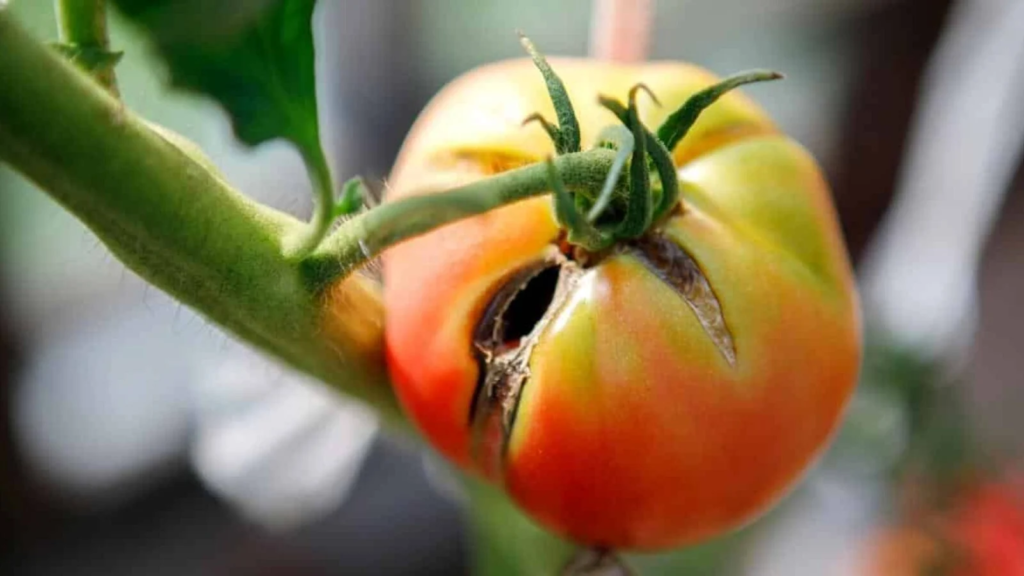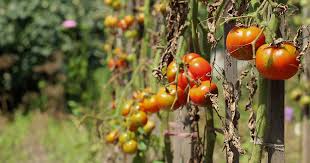Tomatoes are a beloved staple in home gardens and farms, cherished for their flavor and versatility. However, these plants are vulnerable to a range of diseases that can jeopardize your harvest. By identifying these diseases early and taking appropriate actions, you can ensure a thriving crop. Here’s a guide to the 10 most common tomato diseases, along with identification tips, treatments, and care practices to protect your plants.
1. Early Blight
Identification: Dark brown or black concentric rings on lower leaves, spreading upwards as spots enlarge.
Treatment: Remove infected leaves, rotate crops annually, and apply copper-based fungicides.
2. Late Blight
Identification: Water-soaked lesions with white fuzz on leaf undersides, thriving in cool, damp weather.
Treatment: Prune infected areas, improve air circulation, and use preventative copper fungicides.
3. Septoria Leaf Spot
Identification: Small, round brown spots with pale centers, primarily affecting lower leaves.
Treatment: Prune diseased leaves, mulch to reduce soil splashing, and apply fungicides if necessary.

4. Fusarium Wilt
Identification: Yellowing and wilting of leaves, often isolated to one side of the plant.
Treatment: No cure exists; focus on prevention with resistant varieties and soil sterilization.
5. Verticillium Wilt
Identification: Yellowing lower leaves and brown streaks in the vascular system when stems are cut.
Treatment: Plant resistant varieties and avoid reusing contaminated soil.
6. Blossom End Rot
Identification: Sunken, brown patches at the base of fruits caused by calcium deficiency.
Treatment: Ensure consistent watering, amend soil with calcium, and avoid over-fertilization.
7. Tomato Mosaic Virus
Identification: Yellow-green mosaic patterns on leaves, with stunted growth and low yield.
Treatment: Remove and destroy infected plants immediately to prevent spread.
8. Bacterial Spot
Identification: Small, water-soaked lesions on leaves and fruit that darken over time.
Treatment: Apply copper sprays and minimize overhead watering.
9. Tomato Yellow Leaf Curl Virus
Identification: Yellowed, curled leaves and stunted plant growth.
Treatment: Control whiteflies (the primary vector) and grow resistant varieties.
10. Powdery Mildew
Identification: White, powdery patches on leaves, stems, and fruit.
Treatment: Remove affected foliage, increase airflow, and use appropriate fungicides.
General Care Tips for Healthy Tomato Plants
1. Choose Disease-Resistant Varieties: Opt for tomato seeds or seedlings labeled as resistant to common diseases.
2. Practice Crop Rotation: Avoid planting tomatoes in the same spot year after year to disrupt soil-borne pathogens.
3. Water at the Base: Keep leaves dry by watering at the base. Drip irrigation or soaker hoses are ideal.
4. Mulch Around Plants: Use organic mulch to retain soil moisture, reduce soil splashing, and regulate temperature.
5. Prune and Stake Plants: Staking prevents fruit from touching the ground, while pruning improves air circulation.
6. Maintain Garden Hygiene: Remove dead plants, fallen leaves, and debris to minimize disease reservoirs.
7. Test and Prepare Soil: Conduct soil tests to adjust pH (ideal range: 6.0–6.8) and enrich soil with organic matter.
8. Monitor Regularly: Inspect plants frequently for signs of disease or pests, addressing issues promptly.
9. Balance Nutrients: Use a balanced fertilizer (e.g., 10-10-10) and avoid excessive nitrogen to promote fruit over foliage.
10. Companion Planting: Plant basil or marigolds nearby to deter pests naturally.
11. Attract Beneficial Insects: Encourage ladybugs and other predators to control pests that spread diseases.
12. Quarantine New Plants: Isolate new additions before integrating them to prevent disease introduction.
By adopting these strategies, you can protect your tomato plants and enjoy a plentiful, healthy harvest. Proactive care, combined with early identification of issues, ensures your garden remains a productive and rewarding space.
This version provides clear explanations, actionable advice, and a logical structure to help your readers feel informed and prepared.
